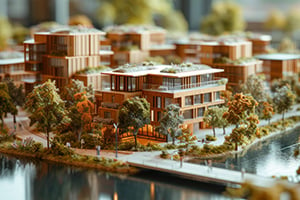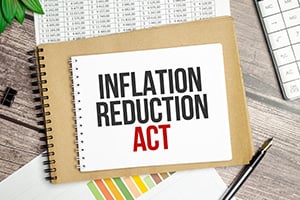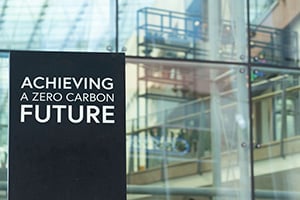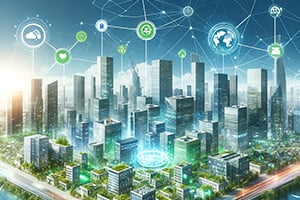By Megan Rosa
Sustainability Analyst
Sustainable Investment Group (SIG)

With the growth of the internet and smart phone apps, online shopping has altered the way we spend our time and money. According to the World Green Building Council, of the 1,200 enclosed malls built in the US, “about one third are dead or endangered”. 1 While the internet is convenient, many people do not enjoy shopping for personal reasons. But, how about if more retail space focused on its people and the environment? What about stores moving towards LEED retail certification?
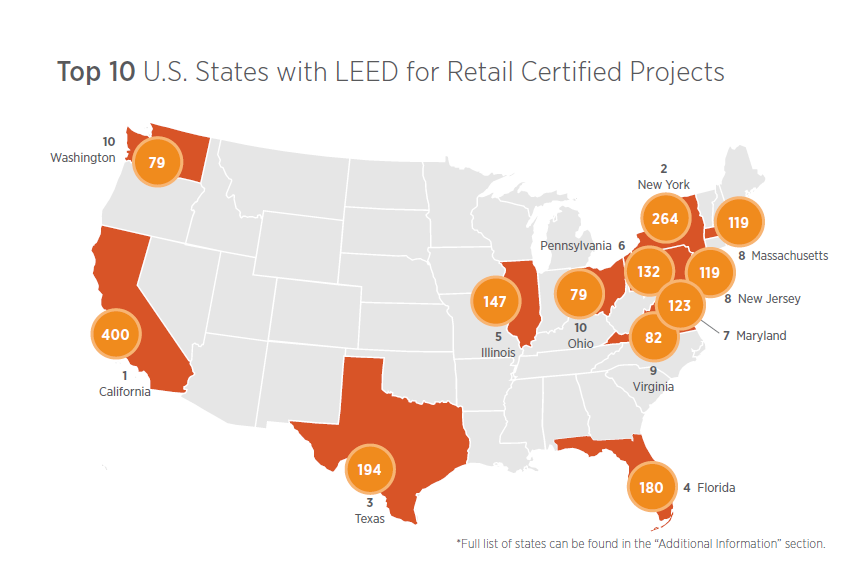 In the United States about 20% of all buildings are retail and mall space. In 2007, the USGBC introduced a pilot program for retail which consisted of two rating systems, New Construction and Commercial Interiors. LEED for Retail rating system was formally launched in 2010.2 LEED Retail is slightly different than regular building certifications in that it takes into account employee and customer occupancies, hours of operation, front and back house space, and different waste stream requirements.3
In the United States about 20% of all buildings are retail and mall space. In 2007, the USGBC introduced a pilot program for retail which consisted of two rating systems, New Construction and Commercial Interiors. LEED for Retail rating system was formally launched in 2010.2 LEED Retail is slightly different than regular building certifications in that it takes into account employee and customer occupancies, hours of operation, front and back house space, and different waste stream requirements.3
With improved indoor environmental quality, such as increase daylight and biophilia both customers and employees are more comfortable. Customers are more engaged in which there is more foot traffic and longer dwell time. In a recent California Energy Commissions report, increased hours of daylight per retail store were strongly associated with increased sales and increased transactions.3 By pursuing LEED, retail space takes into account customer and employee comfort, resource efficiency, and adds marketable value. In the World Green Building Council report, the relationship within LEED certified retail spaces is shown below: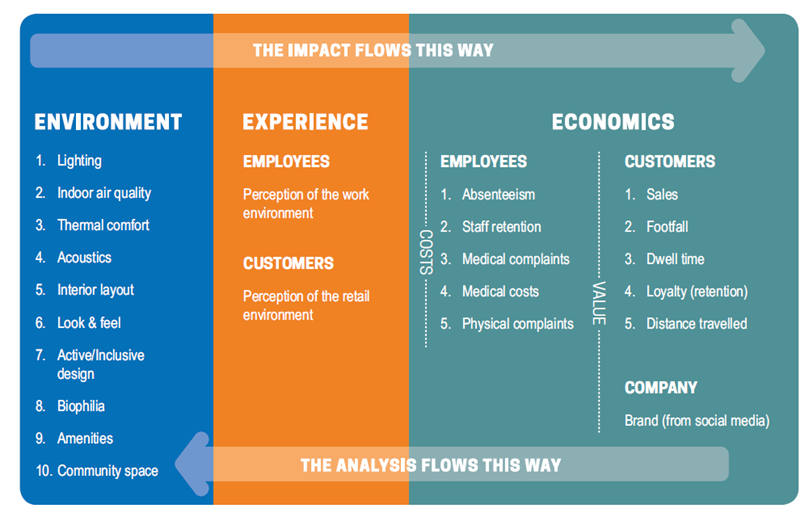
Today there are 8,000 LEED Retail certified spaces with leading adopters such as Bank of America, Starbucks, Target, Wells Fargo, Walgreens, Nike and Yum! Brands.4 Starbucks achieved a milestone this year by opening its 500th LEED-certified store. Both Target and Kohl’s have utilized the LEED Volume Program, which allows a high volume of similar projects to be certified, to achieve 143 stores and 434 stores LEED certified respectively.
With LEED certified retail spaces, it is expected, “A shopping environment that is calm and spacious, with plenty of natural light and greenery, can tempt shoppers to linger longer — and spend more — in store”.5 In 2011, multi-chain retailer Marks & Spencer designed a “Sustainable Learning Store” in Sheffield, England, which aimed to create the most environmentally friendly store possible for the brand. The Sustainable Learning Store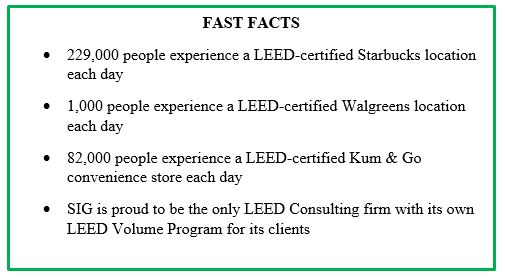 was energy and water efficient, displayed real-time public transit info, and even had electrical vehicle charging stations.5 While the store was BREEAM certified, the UK equivalent to LEED, of the many Marks & Spencer stores, the Sustainable Learning Store had some of the highest customer satisfaction levels.6
was energy and water efficient, displayed real-time public transit info, and even had electrical vehicle charging stations.5 While the store was BREEAM certified, the UK equivalent to LEED, of the many Marks & Spencer stores, the Sustainable Learning Store had some of the highest customer satisfaction levels.6
The research from the Sustainable Learning Store prompted that retailers who pursued ‘green stores’ would ultimately have healthier bank balances. For Marks & Spencer LEED facilities, 458 more consumer deposit accounts were opened and had more than $3 million more in consumer deposit balances every year than the non-certified branches. In addition, utility costs per employee were on average $675 lower in certified branches than non-certified branches.5
 While some stand-alone retail spaces have pursued LEED, in Belgrade, Serbia an entire mall space is certified. The Ušće Shopping Mall is LEED certified, with over 100 tenants that pay for their own square feet of space. Marija Golubovic the LEED AP and key consultant of the mall explains at first tenants don’t see the direct interest or long term benefits to pursing green building certification. However, the mall gives them free energy audits which allows them to make improvements and further decrease overhead costs. This then makes the tenants become more aware of efficiencies and health impacts on employees and customers.3
While some stand-alone retail spaces have pursued LEED, in Belgrade, Serbia an entire mall space is certified. The Ušće Shopping Mall is LEED certified, with over 100 tenants that pay for their own square feet of space. Marija Golubovic the LEED AP and key consultant of the mall explains at first tenants don’t see the direct interest or long term benefits to pursing green building certification. However, the mall gives them free energy audits which allows them to make improvements and further decrease overhead costs. This then makes the tenants become more aware of efficiencies and health impacts on employees and customers.3
Whether it is malls or stand-alone stores, when a green building certification such as LEED is implemented, owners they are investing in the betterment of the environment, their customers, and their sales. As corporate social responsibility continues to grow, LEED for Retail is something many companies can look to. As the rating system continues to gain traction, hopefully it will bring more people back into healthy brick and mortar stores, and ultimately grab their attention off their screens.
SOURCES
- “Health, Well Being & Productivity in Retail”. World Green Building Council (WGBC). 2016 Jan. P.p 1-65.
- “LEED for Retail”. U.S. Green Building Council (USGBC). Frequently Asked Questions. 2009 Dec. August 2016.
- “LEED in Motion: Retail”. U.S Green Building Council (USGBC). 27 Aug. 2014. July 2016. P.p1-26.
- Long, Marissa. “New USGBC Estimates More Than 1.2 Million People Experience a LEED-Certified Retail Space Every Day”. U.S. Green Building Council Press Release (USGBC PR). 23 Oct. 2014. July 2016
- Cuff, Madeline. “How Retailers Can Harness Green Buildings to Boost Profits”. GreenBiz. 2 Feb. 2016. July 2016.
- Willis, Jackie. “M&S: A Sustainable Blueprint to Behold”. The Guardian. 30 May 2012. August 2016.
© 2016 Sustainable Investment Group (SIG). All Rights Reserved.
